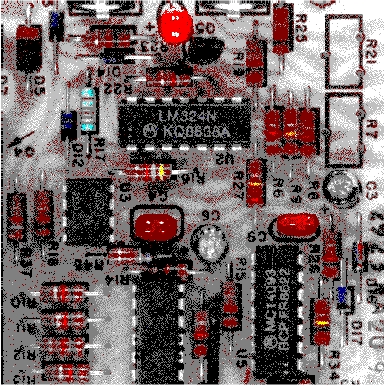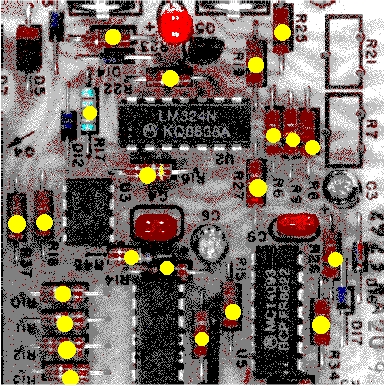| Resistor |
Resistors
There
are many different types of electrical components. Shown below is a
photograph of part of a circuit board. On this circuit board are many
electrical components including some resistors.

There
are resistors, capacitors, diodes and integrated circuits. Using plated
copper and solder on the reverse side of the board, these components are
interconnected and when a supply voltage is provided, these components can
interact. Electrical engineers need to know how to design larger circuits
like this and to control those interactions to achieve some purpose.
In
this lesson you are going to learn about the simplest sort of electrical
component, the resistor. What you learn about resistors is a starting
point. That knowledge helps you as you begin to learn about all of the
other kinds of electrical/electronic components. Still, although resistors
are basic elements, they occur everywhere. On the board below, all of the
resistors are marked with a yellow dot.

|